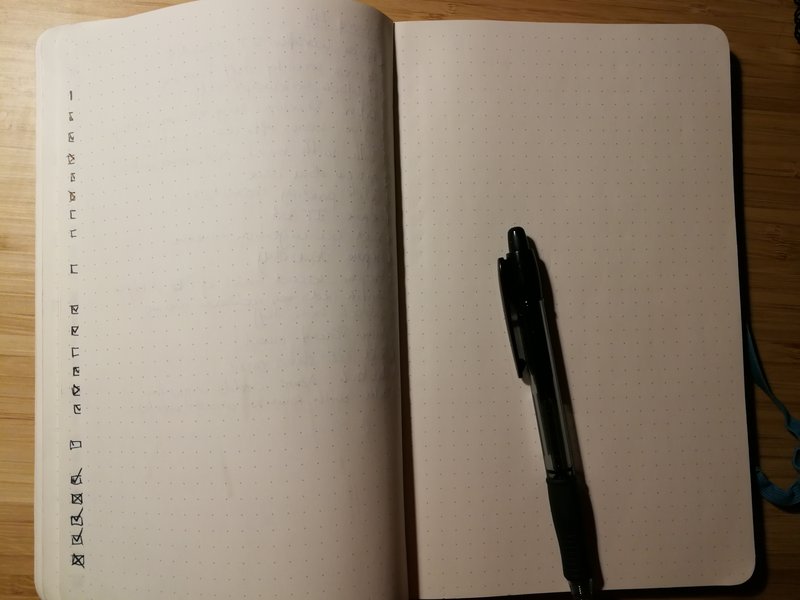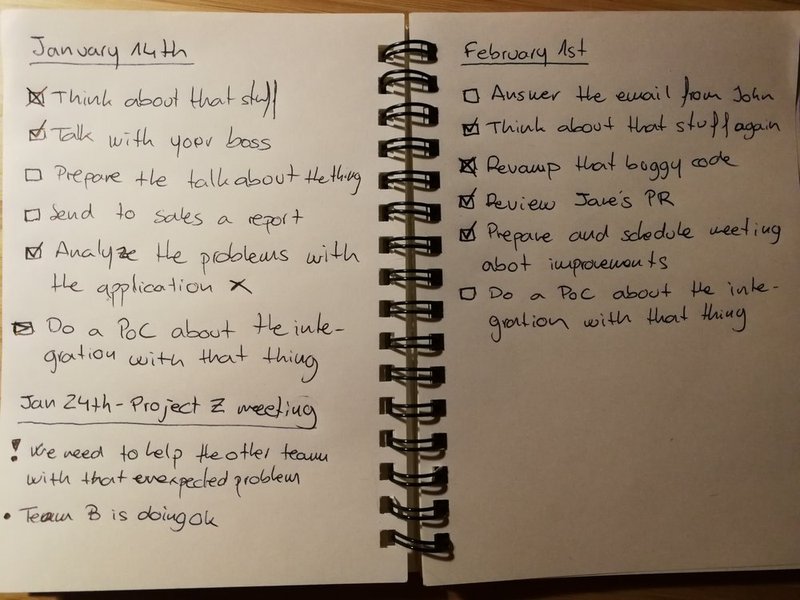Keeping the important tasks under control
I tend to forget things. The more things I have to do, the more I forget. Daily stress probably makes also an impact on the ability to retain stuff in your mind. Besides that, I’m a pretty anxious person. Not at the point of having a disorder, but it surely has a word or two to say in my routine. In summary, I like to have things under control without leaving the urge to do everything immediately win.
My daily tasks at work come from very different contexts. Some of them are issues or projects related. Some tasks are planned within a roadmap and some are just part of a backlog. They can also be classified as those that come from meetings, issues, or other kinds of team’s work and those that I proactively think about to improve the team, the company, and the technology. These tasks, as head of a department, are key to my role.
I don’t know about other companies or people out there but there’s a constant noise at work. Constant notifications, emails, fires, and change of contexts are happening all the time. Focusing is hard if you don’t have a method to identify the important.
When I realized I needed a better way to take notes and write down some TODO things I started asking people and reading about their methods I didn’t have a clear idea, though, about what I needed. Just that it needed to be simple, effective and make my life easier.
The tool
One of the things I read about, that was becoming popular at the time, was the bullet journal. Bullet journal tries to cover almost everything related to self-organization within a notebook. TODO list, tasks scheduling, notes, etc.. It’s a powerful system but extremely complex for my needs. However, by making it stupid simple it could work for me.
I bought this gorgeous and grabbed a good (but simple) pen. I’ve always preferred squared pages notebooks than totally blank. This one has a nice in-the-middle approach. It has kind of a grid.

The thing is that I don’t use it as a bullet journal. I use it just to put a list of items that I need to complete eventually and to take some brief notes after meetings or talks. It’s a simple method and these are the rules I apply:
- Every time I finish working on something I rapidly look at the notebook. I spend 5 seconds on scanning pending things and choose what to work on next
- I don’t write exactly when I need to do a task. That’s something I can remind when I look at the pending items. If I really need to work on a task during a specific day (which doesn’t usually happen) I reserve some working time or a reminder in my calendar. Besides writing it down in the notebook
- Every page starts with the current date. However, I don’t write every date. I keep adding tasks to the last written day on the page until I fill it. I don’t need to know exactly what day I started thinking about a task. However, it’s good to have an approximate idea about it.
- My tasks can have just 4 states: pending, completed, canceled and moved forward
- Every time I turn the page (usually because the previous one was already filled) I write the current date again. I also review the previous two pages and move all the pending tasks to the new one. After that I mark the old tasks as “moved” with the symbol >. This is not critical but may help in the future to understand why two tasks look the same in different pages. Another reason to do this is to keep pending tasks reads effectively. If I needed to read back all the pages looking for pending task it would become a hell.
This is more or less how it looks:

Sometimes I also take notes during meetings or talks. I allow myself, though, to be flexible about how I write down things that are not tasks.
The notebook is, for me, a way to reduce cognitive load. We can call it a brain dump. I don’t need to remember everything all the time. I know that if it’s really important I will read it on the notebook and since I adopt the routine to read it every time that I finish something, I know that the task will be eventually completed.
It also gives me mental relief. Every time I turn the page I review the pending tasks and sometimes there are items that I decide not to do. By telling the notebook that I won’t work one item I’m committing to the notebook. This way I don’t need to think about it again. The notebook has the last word (literally).
The uglies
This method leaves a lot of things out. Things that I’ve not prioritized. I usually take one of three possible options:
- Create a procedure. For example, review once per day all the emails or new PRs in some repositories. Or maybe I can schedule some time once per month to analyze some metrics, etc..
- Delegate. Some tasks can be delegated to other people. They will even do these tasks better than you. Once you learn to do it (although it takes a lot) it’s easier and you feel a tremendous relief
- Ignore. If it’s not worth it to appear in the notebook, to create a procedure or to delegate it’s probably not so important. This task will likely extinguish itself or will re-appear again with higher priority
Don’t forget
Of course, I use many other tools in my day to day that are really important. They may become, though, a problem if you don’t use it properly. Slack, email, github notifications, etc.. Let’s not forget most of us work in a team and with other teams. These tools are critical if you want to be effective as a team. I won’t go into the detail about this (team productivity is a topic for another blog post or discussion) but defining everyone’s expectations of these tools carefully, and how we use them to communicate, is key to succeed as a team. We need commitments with the rest of the people we work with.
Obviously, this is not a guide for everyone’s productivity. This is just one piece of the picture that helps me, and within my current context, to focus on essential things. Every person needs a different way to do things better and the method may also change from company to company.